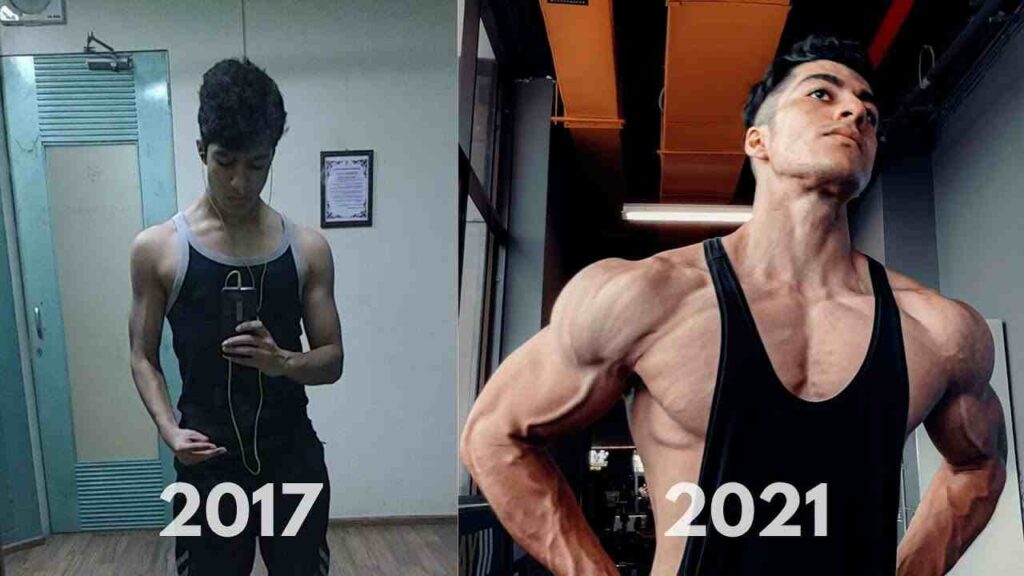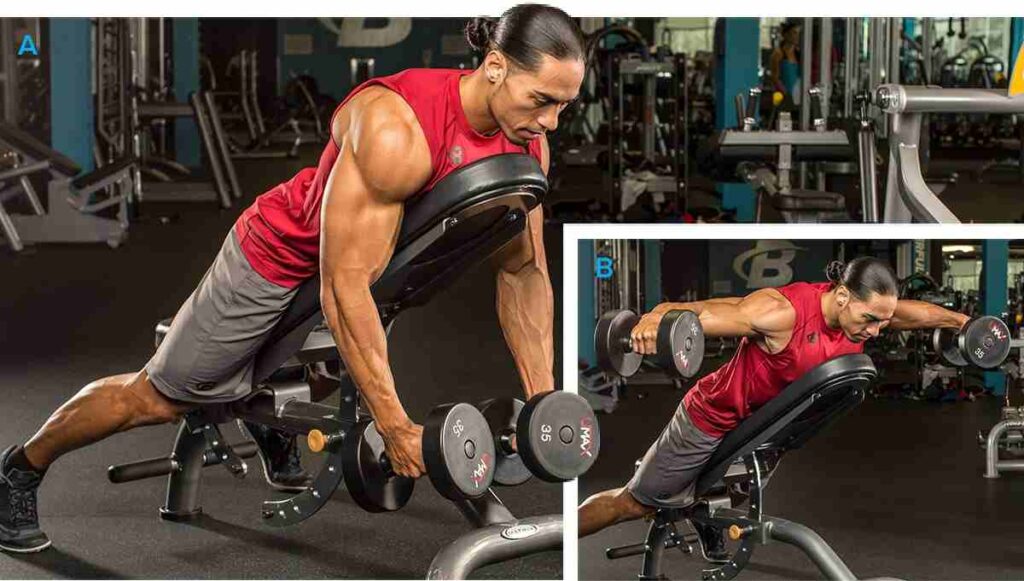Introduction
Shoulders, often referred to as the “crowning jewels” of a well-sculpted physique, are a testament to strength and symmetry. Among the three major deltoid muscle groups, the lateral deltoids, also known as the side delts, are the key to achieving those sought-after boulder shoulders. If you’ve been wondering how to make your shoulders pop and create a striking V-taper, you’re in the right place.
SHOP FOR THE ADJUSTABLE DUMBBELL SET ON AMAZON
In this comprehensive guide, we’re going to deep dive into lateral deltoid exercises. Whether you’re a fitness enthusiast looking to enhance your shoulder aesthetics or an athlete aiming to improve your shoulder stability and performance, this article is your gateway to success. We’ll walk you through the essential knowledge about lateral deltoids, the benefits of strengthening them, the best exercises to target them, and even provide you with a sample workout routine to kickstart your journey.
So, if you’re ready to sculpt those impressive shoulders and stand out in the gym or on the field, let’s begin our exploration of the best lateral deltoid exercises that can transform your physique and boost your overall strength.
Understanding the Lateral Deltoids
The lateral deltoids, often referred to as the lateral or side delts, are one of the three major muscle groups that make up the deltoid muscles in your shoulder. These muscles are located on the outer part of your shoulder and play a significant role in defining the width and appearance of your upper body.
Key Points
- Location: The lateral deltoids are situated on the sides of your shoulder, between the front (anterior) and rear (posterior) deltoid muscles. They create that desirable broad-shoulder look.
- Function: The primary function of the lateral deltoids is to lift your arm away from your body to the side (abduction). This motion is commonly seen when you perform exercises like lateral raises.
- Appearance: Well-developed lateral deltoids contribute to a balanced and aesthetically pleasing upper body. They add width to your shoulders, creating a V-taper that can make your waistline appear narrower.
- Stability: In addition to aesthetics, the lateral deltoids also play a crucial role in stabilizing the shoulder joint during various movements, such as lifting objects overhead or performing actions that involve reaching to the side.
- Importance in Strength Training: In strength training and bodybuilding, building strong and defined lateral deltoids is essential for achieving a well-rounded and proportionate physique. Neglecting these muscles can result in an unbalanced shoulder development.
SHOP FOR THE RESISTANCE BAND ON AMAZON
Overall, understanding the lateral deltoids is vital for anyone looking to develop a strong and visually appealing upper body. Incorporating targeted exercises for the lateral deltoids into your fitness routine can help you achieve better shoulder aesthetics and functional shoulder strength.
Benefits of Strong Lateral Delts
Having strong lateral deltoids, or side deltoid muscles, offers several notable benefits:
- Improved Shoulder Aesthetics: Well-developed lateral deltoids contribute to a broader and more defined shoulder appearance, giving you that sought-after “V-taper” look. This aesthetic improvement can greatly enhance your overall physique and boost your confidence.
- Enhanced Shoulder Stability: The lateral deltoids play a vital role in stabilizing the shoulder joint. Strengthening these muscles helps reduce the risk of shoulder injuries, especially during activities that involve overhead movements, such as weightlifting, swimming, and racquet sports.
- Injury Prevention: Strong lateral deltoids help prevent common shoulder injuries like impingement and rotator cuff problems. They provide support and stability to the shoulder joint, reducing the likelihood of overuse or strain injuries.
- Functional Strength: Lateral deltoid strength is essential for daily activities that require lifting, reaching, or carrying objects. These muscles play a crucial role in maintaining upper body functionality, making everyday tasks easier and less prone to causing discomfort.
- Improved Athletic Performance: Athletes in various sports, including baseball, basketball, and volleyball, rely on lateral deltoid strength for effective throwing, shooting, and spiking motions. Strong lateral deltoids can improve your performance in these sports and others that require upper body power.
- Balanced Muscular Development: A well-rounded fitness routine should aim for balanced muscle development. Strong lateral deltoids complement other muscle groups in the shoulder, such as the front deltoids and rear deltoids, leading to overall shoulder symmetry and reducing the risk of muscular imbalances.
SHOP FOR THE EXERCISE MAT ON AMAZON
Incorporating lateral deltoid exercises into your fitness regimen can help you achieve these benefits, leading to not only better aesthetics but also improved shoulder function and injury resilience.
Essential Equipment for Lateral Deltoid Exercises
When it comes to working on your lateral deltoids, you don’t need a gym full of fancy equipment. However, having the right tools can make a significant difference in the effectiveness of your workouts. Here are the essential pieces of equipment for lateral deltoid exercises:
Dumbbells: Dumbbells are a versatile piece of equipment that can be used for a variety of exercises, including lateral raises. They allow you to control the weight and range of motion of the exercise, which can help you target the lateral deltoids more effectively.
Cable machine: A cable machine is another great option for lateral deltoid exercises. It allows you to isolate the lateral deltoids by providing resistance in a fixed plane of motion.
Resistance bands: Resistance bands are a great option for home workouts. They are lightweight and portable, so you can take them with you wherever you go.
Weight bench: A weight bench is not essential for lateral deltoid exercises, but it can be helpful for some variations of the exercise, such as the incline lateral raise.
In addition to these essential pieces of equipment, there are a few other things that you may want to consider having on hand, such as:
- A mat: A mat can help to protect your joints from injury.
- A spotter: A spotter can help you to stay safe during exercises that involve heavy weights.
- A water bottle: Staying hydrated is important for a healthy workout.
SHOP FOR THE BEST QUALITY PROTEIN SUPPLEMENTS ON AMAZON
If you are new to strength training, it is a good idea to start with lighter weights and gradually increase the weight as you get stronger. It is also important to focus on proper form to avoid injury.
Best Lateral Deltoid Exercises
The lateral deltoid is one of the three muscles that make up the shoulder. It is responsible for abducting the arm or lifting it out to the side. The best lateral deltoid exercises are those that isolate the muscle and allow you to lift a challenging weight.
Dumbbell Lateral Raise
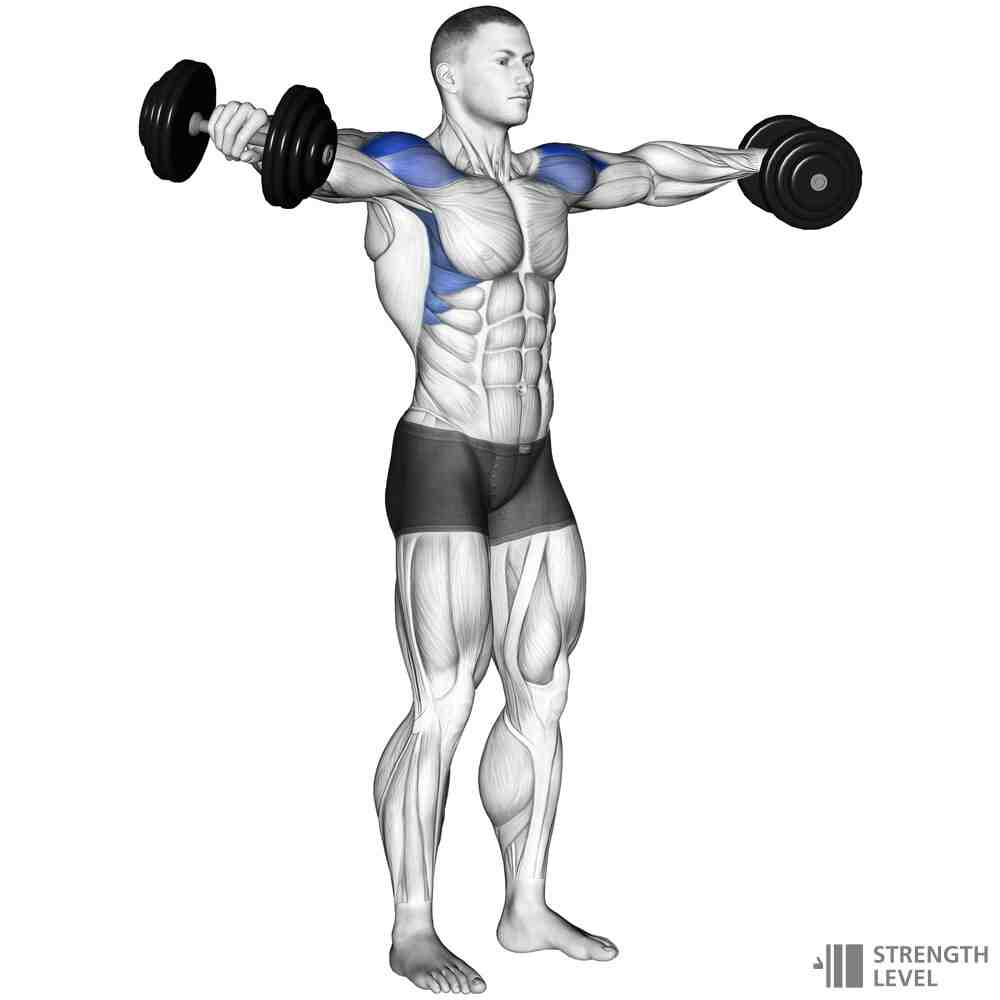
The Dumbbell Lateral Raise is a classic exercise that targets the lateral deltoid muscles, helping you achieve those coveted shoulder caps. It’s a fundamental move for shoulder development.
Target Muscles: This exercise primarily targets the lateral deltoids, which are responsible for the rounded appearance of your shoulders.
How to Perform
- Stand up straight with a dumbbell in each hand, arms by your sides, and palms facing your body.
- Keep a slight bend in your elbows and maintain good posture.
- Lift the dumbbells to the sides with a slight bend in your elbows until your arms are parallel to the ground.
- Lower the weights back to the starting position in a controlled manner.
- Perform 3-4 sets of 10-15 reps.
Tips
- Use a weight that challenges you but allows for proper form.
- Avoid using momentum; focus on controlled, deliberate movements.
Cable Lateral Raise

Cable lateral raises provide constant tension throughout the range of motion, making them an excellent choice for targeting the lateral deltoids and building shoulder definition.
Target Muscles: This exercise primarily targets the lateral deltoids.
How to Perform
- Attach a D-handle to a low pulley and adjust the weight stack.
- Stand with your side to the machine, holding the handle with the hand farthest from the machine.
- Keep a slight bend in your elbow and your arm extended at your side.
- Lift the handle upwards and outwards until your arm is parallel to the ground.
- Slowly lower the handle back to the starting position.
- Perform 3-4 sets of 12-15 reps for each arm.
Tips
- Maintain core stability to prevent swaying.
- Use a controlled tempo during both the concentric and eccentric phases.
Upright Row
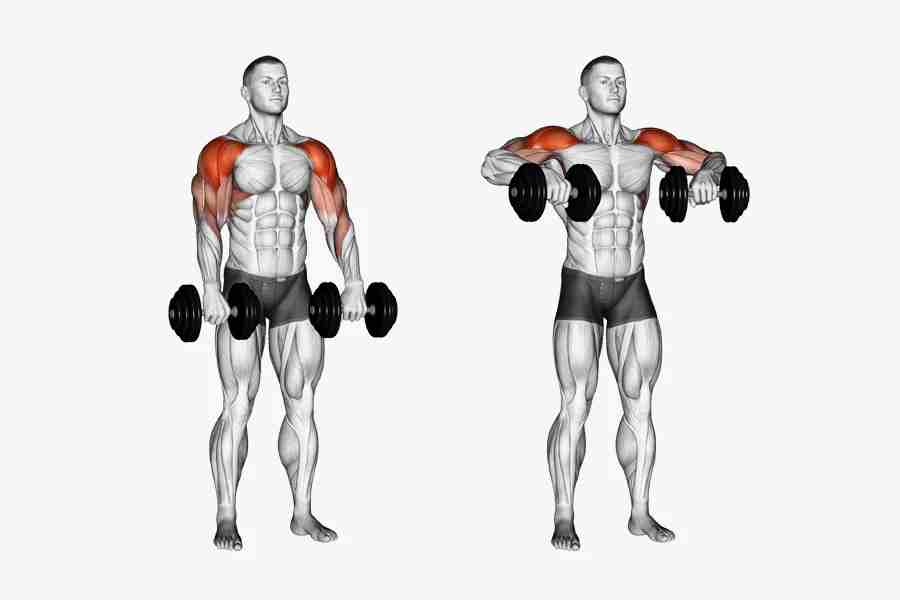
The Upright Row is a compound exercise that not only targets the lateral deltoids but also engages the traps and upper back muscles.
Target Muscles: This exercise primarily targets the lateral deltoids, with secondary engagement of the traps and upper back.
How to Perform
- Stand with a barbell or a pair of dumbbells in front of your thighs, palms facing your body.
- Keep your hands close together and lift the weight by pulling it straight up towards your chin.
- Keep the weights close to your body as you lift.
- Lower the weight back down to the starting position.
- Perform 3-4 sets of 8-10 reps.
Tips
- Avoid lifting too heavy to prevent straining your shoulder joints.
- Maintain a slight bend in your elbows throughout the exercise.
Arnold Press
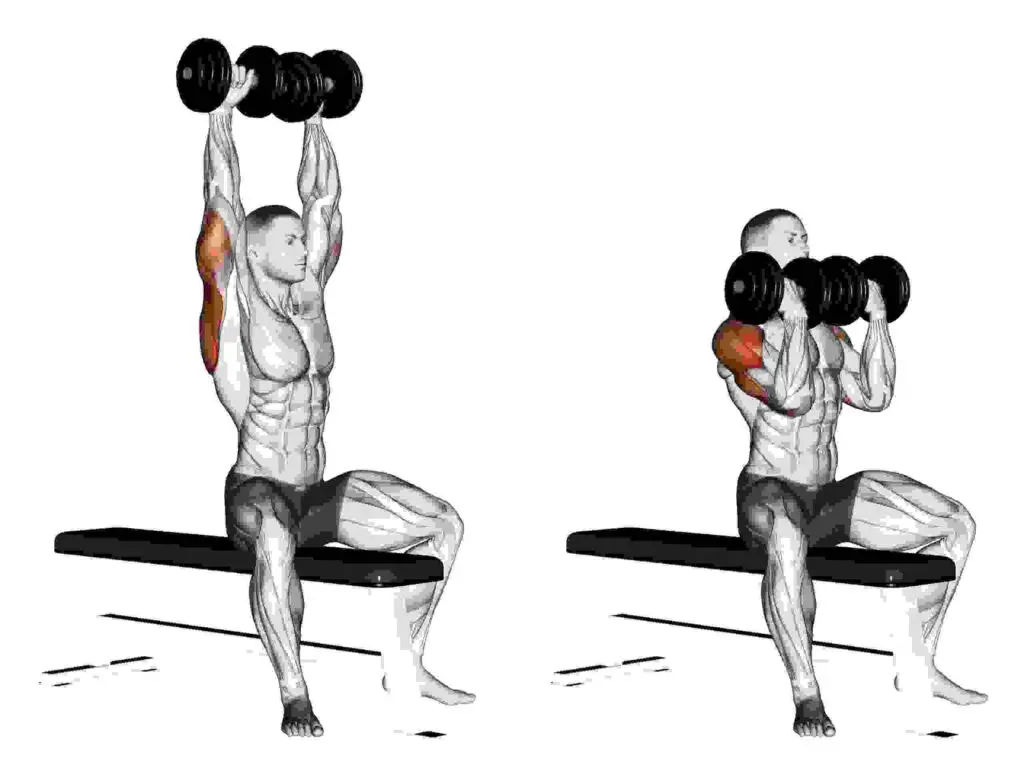
Named after Arnold Schwarzenegger, this exercise is a fantastic way to target the entire shoulder complex, including the lateral deltoids.
Target Muscles: The Arnold Press works the front and lateral deltoids.
How to Perform
- Sit on a bench with back support, holding a pair of dumbbells at shoulder height with your palms facing your body.
- Start with your elbows bent and close to your chest.
- Press the dumbbells overhead while rotating your palms to face forward.
- Lower the weights back to the starting position, reversing the palm rotation.
- Perform 3-4 sets of 10-12 reps.
Tips
- Control the rotation of your palms to avoid straining your wrists.
- Use proper posture and engage your core for stability.
W Raise
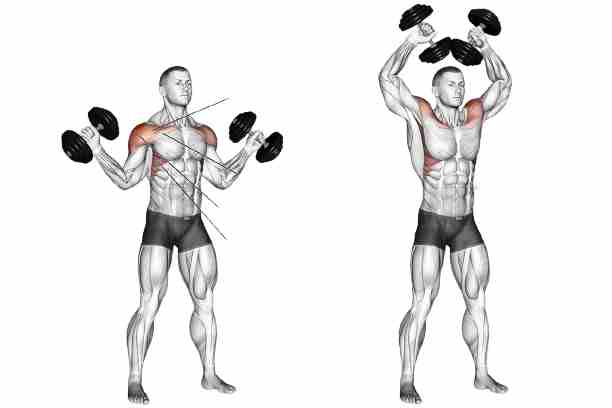
The W Raise is an isolation exercise that targets the rear and lateral deltoids, contributing to balanced shoulder development.
Target Muscles: This exercise primarily targets the lateral deltoids and also engages the rear deltoids.
How to Perform
- Stand with your feet shoulder-width apart, holding a pair of dumbbells at your sides with palms facing your body.
- Lift the dumbbells out to the sides in a “W” shape, keeping your elbows bent.
- Squeeze your shoulder blades together as you lift.
- Lower the weights back to the starting position.
- Perform 3-4 sets of 12-15 reps.
Tips
- Focus on the mind-muscle connection to feel the lateral deltoids working.
- Use a light to moderate weight to maintain proper form and avoid straining your shoulders.
SHOP FOR THE FITNESS TRACKER ON AMAZON
These are just a few of the best lateral deltoid exercises. When choosing exercises, it is important to consider your fitness level and goals. If you are a beginner, start with lighter weights and fewer repetitions. As you get stronger, you can increase the weight and repetitions.
Sample Lateral Deltoid Workout Routine
Here’s a 4-week sample lateral deltoid workout routine that you can follow to build strong and well-defined lateral deltoid muscles. This routine incorporates some of the exercises we discussed earlier:
Week 1: Foundation Building
Day 1: Dumbbell Lateral Raises
- 3 sets of 12 reps
- Rest between sets: 60 seconds
Day 2: Cable Lateral Raises
- 3 sets of 12 reps (each arm)
- Rest between sets: 60 seconds
Day 3: Rest
Day 4: Upright Rows
- 3 sets of 10 reps
- Rest between sets: 60 seconds
Day 5: W Raises
- 3 sets of 12 reps
- Rest between sets: 60 seconds
Day 6: Rest
Day 7: Rest
Week 2: Increasing Intensity
Day 1: Dumbbell Lateral Raises
- 4 sets of 12 reps
- Rest between sets: 60 seconds
Day 2: Cable Lateral Raises
- 4 sets of 12 reps (each arm)
- Rest between sets: 60 seconds
Day 3: Rest
Day 4: Upright Rows
- 4 sets of 10 reps
- Rest between sets: 60 seconds
Day 5: W Raises
- 4 sets of 12 reps
- Rest between sets: 60 seconds
Day 6: Rest
Day 7: Rest
Week 3: Progressive Overload
Day 1: Dumbbell Lateral Raises
- 4 sets of 15 reps
- Rest between sets: 45 seconds
Day 2: Cable Lateral Raises
- 4 sets of 15 reps (each arm)
- Rest between sets: 45 seconds
Day 3: Rest
Day 4: Upright Rows
- 4 sets of 12 reps
- Rest between sets: 45 seconds
Day 5: W Raises
- 4 sets of 15 reps
- Rest between sets: 45 seconds
Day 6: Rest
Day 7: Rest
Week 4: Peak Performance
Day 1: Dumbbell Lateral Raises
- 5 sets of 15 reps
- Rest between sets: 45 seconds
Day 2: Cable Lateral Raises
- 5 sets of 15 reps (each arm)
- Rest between sets: 45 seconds
Day 3: Rest
Day 4: Upright Rows
- 5 sets of 12 reps
- Rest between sets: 45 seconds
Day 5: W Raises
- 5 sets of 15 reps
- Rest between sets: 45 seconds
Day 6: Rest
Day 7: Rest
Additional Tips
- Warm up before each workout with light shoulder mobility exercises.
- Focus on proper form and control during each exercise.
- Increase weights gradually to maintain the challenge.
- Stay hydrated and ensure adequate nutrition for muscle recovery.
- Listen to your body, and if you experience pain or discomfort, consult a fitness professional or physician.
SHOP FOR THE WORKOUT WATER BOTTLE ON AMAZON
This 4-week lateral deltoid workout routine is designed to progressively challenge your lateral deltoids, leading to improved strength and definition over time. Remember to adjust the weights and repetitions according to your fitness level and consult a fitness expert if you have any concerns or questions about your training.
FAQs
Q 1. What is the difference between lateral deltoid exercises and front deltoid exercises?
Ans. Front deltoid exercises primarily target the anterior (front) deltoid muscles, while lateral deltoid exercises focus on the lateral (side) deltoid muscles. The lateral deltoids contribute to the width and roundness of your shoulders, giving them a broader appearance. Front deltoid exercises, on the other hand, emphasize the front of your shoulders, helping to create the appearance of fullness in the upper chest and shoulders.
Q 2. Can I do lateral deltoid exercises at home without gym equipment?
Ans. Yes, you can perform effective lateral deltoid exercises at home without gym equipment. Bodyweight exercises like lateral raises can be done with just your body or light household items such as makeshift weights. Resistance bands are also an excellent tool for home workouts, providing resistance for lateral deltoid exercises.
Q 3. How often should I train my lateral delts?
Ans. The frequency of lateral deltoid training depends on your overall workout routine and goals. Typically, training your lateral delts 2-3 times a week is sufficient for most individuals. However, it’s essential to ensure proper rest and recovery between workouts to prevent overtraining and promote muscle growth.
Q 4. Are lateral deltoid exercises suitable for beginners?
Ans. Yes, lateral deltoid exercises can be suitable for beginners. It’s important to start with light weights or resistance bands and focus on proper form and technique to avoid injury. As you progress, you can gradually increase the weight or resistance to continue challenging your muscles.
Q 5. What are some advanced lateral deltoid exercises for experienced lifters?
Ans. Experienced lifters can incorporate advanced exercises like “Lateral Raise Drop Sets” or “Plate Raises” into their routines. These exercises involve heavier weights or more challenging variations to stimulate muscle growth in the lateral deltoids. However, it’s crucial to have a strong foundation and proper form before attempting advanced exercises.
Conclusion
In conclusion, developing strong and well-defined lateral deltoids is essential not only for aesthetic purposes but also for overall shoulder stability and injury prevention. The exercises we’ve covered in this article, Dumbbell lateral raise, Cable lateral raise, Upright row, Arnold press, and W raise, are fantastic tools to help you achieve your fitness goals.
Remember that consistency is key, and it’s crucial to incorporate these exercises into a well-rounded workout routine. Whether you’re a beginner or an experienced lifter, there’s a lateral deltoid exercise suitable for you.
Don’t forget to prioritize warm-up, cooldown, nutrition, and recovery in your fitness journey. By following the tips and guidance provided, you’ll be well on your way to building impressive lateral deltoids that not only look great but also contribute to your overall strength and well-being.

Good day, and welcome to Fitthour. My name is Shubham Vijay, and I am a certified personal trainer and nutrition coach with 6 years of experience in the fitness industry. At Fitthour, we specialize in types of training, such as strength training, cardio, or HIIT, and our mission is to help clients achieve their fitness goals and improve their overall health.

